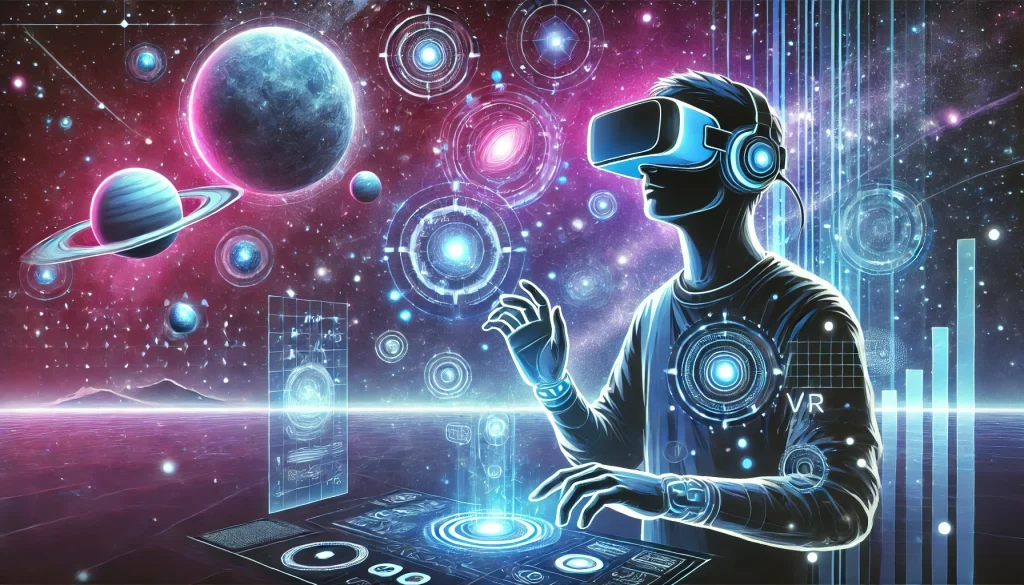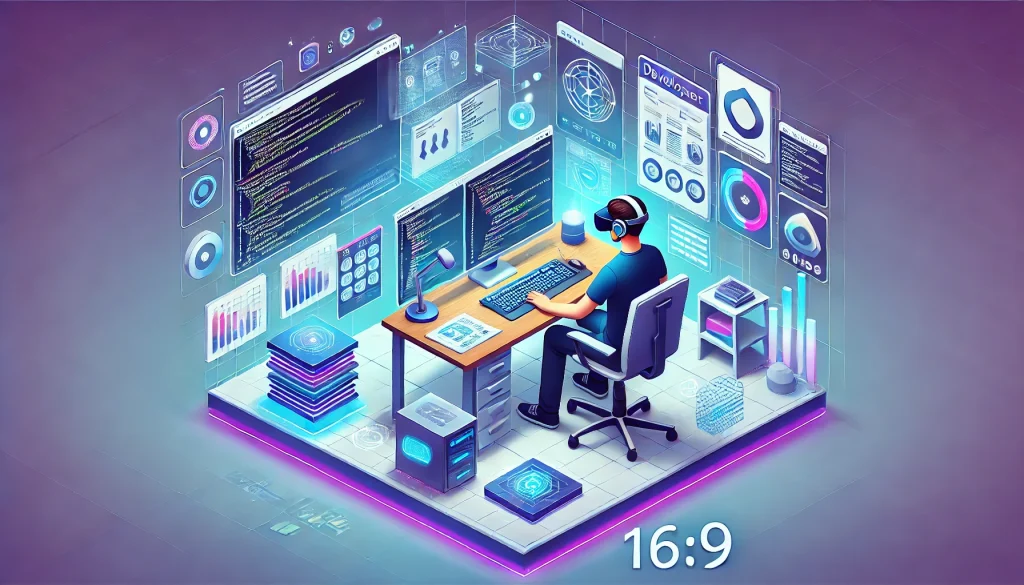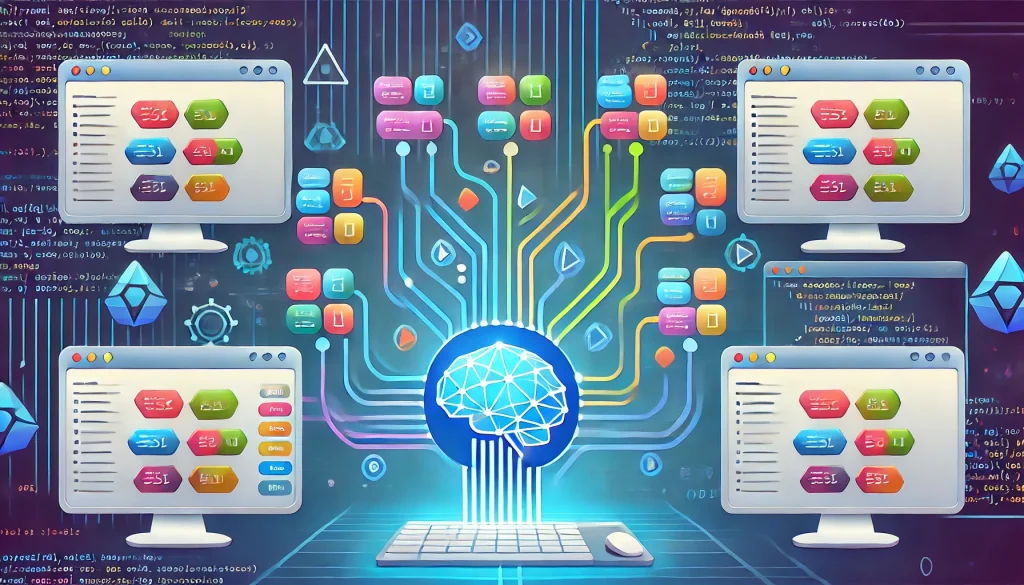For years, augmented reality (AR) and virtual reality (VR) were separate buzzwords—AR overlays digital content onto the real world, while VR immerses users in a fully digital environment. Today, these technologies are converging into what’s called “spatial computing”—the idea of blending digital and physical experiences so seamlessly that “computing” extends into every corner of our environment. At CES 2025, spatial computing took center stage, with announcements about high-end headsets, new XR (extended reality) development tools, and enterprise use cases. The world is moving beyond flat screens toward immersive digital worlds—and it’s happening faster than you might think.
1. What Is Spatial Computing?

1.1 The Core Concept
Spatial computing is about embedding digital content in the 3D space around us, bridging virtual objects or interfaces with our physical surroundings. Instead of limiting apps to a phone or laptop, spatial computing allows users to walk through data visualizations, grab virtual objects, or collaborate on 3D models as if they were physically present.
1.2 AR + VR = XR
You’ll often see the acronym XR—extended reality—encompassing AR, VR, and everything in between. Devices may switch seamlessly from VR (full immersion) to AR (partial overlay), letting you remain aware of the real world while seeing holographic data or screens pinned to your walls.
Key Drivers:
- Better Hardware: Headsets are more comfortable, with higher resolution and longer battery life.
- Advanced Tracking: Cameras and sensors map rooms accurately, enabling stable, realistic overlays.
- Spatial Audio: Realistic sound placement grounds digital content in a user’s environment.
2. Apple’s Vision Pro and Mixed Reality

2.1 Vision Pro: A Milestone for Mainstream XR
Apple’s long-awaited Vision Pro made waves by offering a high-end mixed reality headset aimed at both consumers and professionals. Its features include:
- Ultra-High-Resolution Displays: Crisp visuals that reduce screen-door effect.
- Eye Tracking & Gesture Control: Intuitive interaction without controllers, combining eye-based pointing and subtle hand gestures.
- Seamless AR/VR Switching: A digital crown to move from a fully immersive virtual world to a more AR-focused environment.
For Apple, Vision Pro marks a crucial step in turning AR/VR into a mainstream platform—similar to the iPhone’s revolution a decade ago. It comes at a premium price, but sets a template for future, more affordable versions.
2.2 Rich Ecosystem & Spatial UI
Apple’s well-known ecosystem advantage means:
- Unified Dev Tools: ARKit extended for full spatial computing.
- Spatial UI Design: Guidelines so developers can create comfortable, intuitive experiences for extended wear.
- Cross-App Integration: Easily bring iOS apps into XR, bridging phone and headset experiences.
3. Use Cases: From Enterprise to Entertainment

3.1 Enterprise Training & Collaboration
Companies leverage AR/VR for employee training—like simulating machinery operation or safety drills without real-world risks. Design collaboration also benefits, as architects and engineers can view 3D prototypes at scale, identifying issues before manufacturing. This eliminates guesswork, shortens iteration cycles, and can dramatically reduce costs.
3.2 Gaming & Metaverse Platforms
VR gaming is expanding beyond early adopters: new titles support cross-play between VR and standard screens. Meanwhile, metaverse or social VR platforms (e.g., VRChat, Horizon Worlds) let users build virtual experiences, attend concerts, or simply hang out with distant friends. With advanced headsets, these worlds become more immersive and interactive, fueling broader adoption.
3.3 Spatial Retail & Advertising
Imagine walking into your living room wearing a headset and seeing how a couch or lamp from an online store would look in real size, color, and lighting. AR e-commerce experiences help customers make more confident purchases, reducing returns. Advertisers can also place interactive 3D objects that users can pick up or walk around, bridging the gap between digital ads and physical experiences.
4. Why Developers Should Care
4.1 Growing Market & Career Potential
As devices like Vision Pro spark broader interest, demand for XR development—using platforms like ARKit, ARCore, Unity, or Unreal—will rise. Designers who specialize in 3D interfaces and spatial UX can stand out in a market hungry for such skills. Enterprises are hiring to build immersive training simulations, virtual showrooms, or collaborative tools.
4.2 Evolving Tools & Frameworks
- Unity & Unreal Engine: Already established for VR games, now bolstered by advanced AR capabilities.
- ARKit / ARCore: Apple and Google’s platforms for smartphone-based AR, extended to more robust headset use.
- WebXR: Emerging web standards let developers create AR/VR experiences accessible via browsers—potentially a huge shift for cross-platform reach.
4.3 Spatial UI and Interaction Design
Designing for XR means thinking in 3D. Depth, field of view, and user comfort become design constraints. Developers must consider:
- Gesture Input: Natural gestures or controllers for object manipulation.
- Gaze & Eye Tracking: Where a user looks can direct focus or commands.
- Ergonomics: Minimizing fatigue, ensuring text or small objects are easily visible.
Mastering these design principles can differentiate your projects, making them more immersive and user-friendly.
5. Challenges and Considerations

5.1 Hardware Limitations
Even with leaps in display and sensor tech, many devices remain bulky and expensive. Battery life for high-end XR experiences can be limited. Developers may need to optimize for power efficiency or accept constraints on runtime.
5.2 Content Creation & Standards
Building realistic 3D content is resource-intensive. Modelers, animators, and environment artists must craft assets that look convincing. Standard file formats (like glTF) help, but no single pipeline dominates. Collaboration among hardware makers, software platforms, and content creators is essential for cohesive XR experiences.
5.3 Privacy & Ethical Concerns
Spatial computing can gather intimate data: a user’s environment, gestures, eye movements, and more. Privacy regulations and user consent must be handled seriously to avoid misuse of personal or location-based data. Similarly, caution is advised about potential addictive or misleading XR experiences—particularly in social VR.
Conclusion
After years of hype, AR/VR is unifying under the banner of spatial computing, poised to reshape how we work, play, and interact with technology. Hardware breakthroughs—like Apple’s Vision Pro—and evolving software ecosystems (ARKit, ARCore, Unity, Unreal) push XR beyond experiments into everyday applications. Whether you’re training employees via simulated experiences, building VR games that cross real-world boundaries, or crafting entirely new digital interfaces for enterprise collaboration, the opportunities are vast.
Key Takeaways:
- Spatial computing merges AR and VR into immersive, everyday interfaces.
- Apple’s Vision Pro signals a push toward premium, mainstream XR hardware.
- Use cases span enterprise training, gaming, retail, metaverse events, and more.
- Developers and designers skilled in XR tools will find growing demand as these new interfaces bloom.
As we move forward, the potential for XR to become the next computing interface is real. Companies and devs who invest in spatial design, user comfort, and robust applications stand to shape a future where the digital and physical worlds blend seamlessly—just as smartphones did for the mobile revolution.














